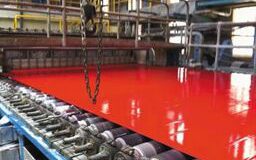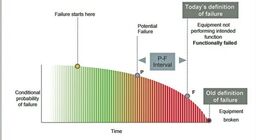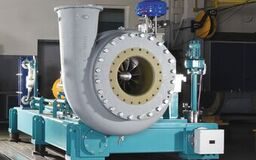Evaluation of Fillers and Fines in Paper and Board: Fast, Non-Destructive, Accurate, and Reliable
GISELHER GRUENER AND ALEXANDER GRUENER
Mineral fillers and fines are added to the papermaking process to create a product with certain characteristics, internally and on the surface. Which fillers and fines are added depends on the application of the final product. Typical fillers are:
• calcium carbonate
• kaolin
• titanium dioxide
• talcum
Some of these must be added in large quantities, which causes high cost. In the interest of cost efficiency, eco-consciousness, and quality, mills need permanent control and monitoring of the incoming furnish or base paper and board, and also of the final product. Accurate, reliable, and objective test results that clearly show what is inside the paper or board are indispensable. Without this knowledge, a non-optimal dosage of fillers and fines is most likely the result; this can negatively affect quality, cost-efficiency, and eco-friendliness.
TRADITIONAL COMBUSTION METHOD
The traditional combustion method provides very limited information and, even more importantly, only a certain level of accuracy. The combustion method according to ISO and TAPPI is done at two different temperatures. At first, the sample is burned at 525°C. At this temperature, only the total ash content can be determined by weighing it. After that, the ash is burned at 900°C and, together with the 525°C value, this provides a result for calcium carbonate, clay, and titanium dioxide (see Fig. 1).

If done according to ISO and TAPPI Standards, the complete procedure takes between three and seven hours. It strongly depends on the operator and the accuracy of their work. In lab routine work, the approximate accuracy is ± 5 percent.
The various expectations of today’s consumers are challenging for any kind of manufacturer in any industry. Paper products need to fulfill certain quality requirements, according to their later use. Toilet paper needs to be soft, copy paper needs to have a certain whiteness degree and stiffness, and corrugated board needs to withstand high humidity and temperature changes. Additionally, production must be eco-friendly and sustainable, but the price must not be too high. To be able to meet this mix of expectations, test results do not only need to be accurate, reliable, and objective, they need to be available very fast.

Due to the operator dependency, the time-intensive test procedure, and the unsatisfying accuracy of the test results, the combustion method doesn’t help to get the necessary information as fast, as exact, and as reliably as needed.
THE EMTEC ACA ASH CONTENT ANALYZER
With the emtec ACA Ash Content Analyzer, a test device has been recently introduced to the industry that lifts the analysis of paper, board, and plastic films to a much higher level. In comparison to the traditional combustion method, the device is much faster, more accurate, and operator independent. However, most importantly, the device cannot only measure the total ash content or provide a mix of information; it provides both the total ash content and additional information about the percentage distribution of the single mineral fillers and fines. The following fillers and fines are detected during the measurement: calcium carbonate, kaolin, talcum, and titanium dioxide, as well as other mineral fillers commonly used in the paper industry.

The device’s measuring method is based on a combination of x-ray fluorescence analysis and the transmission method (see Fig. 2). First, the captured x-ray fluorescence spectra are qualitatively evaluated and afterwards, together with the transmission, it is used to quantitatively determine the concentration of the detected filler components. The signal peaks are converted using complex mathematical functions (algorithms) in the corresponding concentrations.

DATA ANALYSIS WITH THE ACA
With the ACA, one measurement takes approximately 45 seconds. After running the test, the device determines the total ash content as well as the percentage content of each of the individual fillers and fines. This information appears on the device display (see Fig. 3).
The test data are transferred to the emtec PC software as well, where further options allow a deeper analysis of test results. In comparison to the unsatisfying accuracy of the combustion method of up to 5 percent, the ACA has an accuracy between approx. ± 2 percent (abs.) and approx. ± 0.1 percent (abs.), depending on the calibration.

In the following example, a décor paper maker planned to compare the mineral filler content of three different décor paper samples. To get the data, they decided to test the paper according to the ISO/TAPPI combustion method at 525°C and additionally with the new emtec ACA. Figure 4 shows the results of both tests.
The total mineral filler content, measured by the ACA, correlates very well with the results from the combustion method. Yet by comparison, the ACA does not only determine the total mineral filler content, it provides the information about the percentage content of the individual mineral fillers.
The x-ray fluorescence spectrum deserves special attention. With a bit of experience, the user gets a lot of additional information from the spectrum. Figure 5 illustrates the x-ray spectrum for samples 1, 2, and 3. What does this tell us?

Samples 1 and 3 demonstrate quite well what extra information the spectrum contains—for example, the aluminum peak. It usually indicates clay, but only if the ratio between aluminum and silicon is about 1:2. In the case of Samples 1 and 3, the ratio between the two peaks is different (Fig. 6).
Sample 1 does not contain any silicon. Thus, it does not contain clay either. The aluminum needs to come from something else. In the case of Sample 1, the aluminum comes from the TiO2 coating with aluminum hydroxide (approx. 2-4 percent of the TiO2 content). Sample 3 contains clay (8 percent), but the ratio between the Al and Si peaks is approximately 1.25:2. The additional aluminum does not come from the clay; again, it comes from the aluminum hydroxide coating of the TiO2. The additional aluminum is listed under “miscellaneous” in the PC software and located directly next to the titanium peak in the x-ray fluorescence spectrum.

Sample 2 contains clay as well, but in this case, there is no additional aluminum; the ratio between the Al and Si peak is 1:2 (fig. 7). The TiO2 content is almost zero, this means that the aluminum does not come from aluminum hydroxide coating. Interesting as well, the ACA detected iron oxide in Sample 2. With the combustion method, iron oxide cannot be detected.
CONCLUSION
The evaluation of the three décor paper samples illustrates the limitations of the combustion method very well, especially in comparison to the possibilities of the ACA.
The device provides results for the total mineral filler content and its components within only 45 seconds and an accuracy of ± 0.1—0.3 percent (abs.) or ≤ ±0.5—2 percent (abs.), depending on the type of device calibration, grade-specific vs. global calibration.
The test is non-destructive and operator independent. Due to the possibilities the device offers, it can be used for a wide range of applications, such as QA, research and development, process and product optimization, complaint management, or trouble shooting. Giselher Gruener is the founder and general manager for emtec Electronic GmbH. Alexander Gruener is emtec sales area manager for Australia, Canada, China, Taiwan, and the US. Learn more online at www.emtec-electronic.de/en/.




